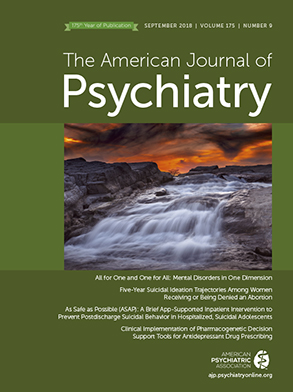In response to claims being made that brain imaging technology had already reached the point at which it could be useful for making a clinical diagnosis and for helping in treatment selection in individual patients, the APA Assembly passed an action paper calling for the development of an APA Position Paper on the Clinical Application of Brain Imaging in Psychiatry. Consequently, a workgroup was appointed under the auspices of the APA Council on Research to develop an evidenced-based review of the current state of the art of the clinical utility of brain imaging for psychiatric diagnosis and for predicting treatment response. The review focused on the following diagnostic areas: adult mood and anxiety disorders, psychotic disorders, cognitive disorders, substance use disorders, and childhood disorders, including attention deficit hyperactivity disorder, childhood bipolar disorder, depression/anxiety, and autism spectrum disorder. This review was approved by the APA Board of Trustees as a resource document. The review is summarized below, and the full resource document is available in a
data supplement accompanying the online version of this APA Official Action (
ajp.psychiatryonline.org).
In clinical medicine, there has been considerable interest in developing objective, biologically based tests for psychiatric disorders. Such advances could yield important benefits, such as predicting treatment response, differentiating between related diagnostic categories, and potentially treating at-risk patients prophylactically to prevent neurotoxicity and clinical deterioration. For over two decades, brain imaging has maintained a well-established but narrow place in the diagnostic evaluation of patients with psychiatric disorders, largely because of the usefulness of neuromorphological MRI in detecting and characterizing structural brain abnormalities, such as lesions and atrophy.
The successful application of neuroimaging technology in psychiatric research has revolutionized clinical neuroscience perspectives on the pathophysiology of the major psychiatric disorders. Yet despite the invaluable leads that the neuroimaging studies have provided regarding the neurobiological bases for psychiatric disorders, except in the case of neurocognitive disorders, neuroimaging has yet to have a significant impact on the diagnosis or treatment of individual patients in clinical settings. This is largely due to the fact that the effect size of neuroimaging and other biological abnormalities identified to date for most psychiatric disorders has been relatively small, and thus imaging measures do not provide sufficient specificity and sensitivity to accurately classify individual cases with respect to the presence of a psychiatric illness.
Suggested standards for the development of clinically useful diagnostic biomarkers (adapted from the 1998 Consensus Report of the Working Group on Molecular and Biochemical Markers of Alzheimer’s Disease) include the following: 1) the biomarker should have a sensitivity of at least 80% for detecting a particular psychiatric disorder and a specificity of at least 80% for distinguishing this disorder from other psychiatric or medical disorders; 2) the biomarker should be reliable, reproducible, and ideally be noninvasive, simple to perform, and inexpensive; and 3) data used to validate the biomarker should be confirmed by at least two independent sets of qualified investigators in independent study samples, with the results published in peer-reviewed journals.
According to this standard, the psychiatric imaging literature currently does not support the application of a diagnostic biomarker to positively establish the presence of any primary psychiatric disorder. This is in contrast to amyloid positron emission tomography scans, in which reduced binding in gray matter can be used to exclude the diagnosis of Alzheimer’s disease. Although assessments of intrarater and interrater reliabilities commonly are reported for quantitative neuroimaging measures, these have been limited to establishing measurement reliability (e.g., of cerebral volumes or neuroreceptor binding potential) but not to the reliability of diagnostic interpretation. Thus, the peer-reviewed scientific literature, except in the case of neurocognitive disorders, does not yet contain a single example of a diagnostic imaging biomarker with regard to a psychiatric disorder or treatment for which relatively high intra- and interrater reliabilities have been reported in two independent studies. Similarly, except in the case of neurocognitive disorders, there is not yet a case in the literature in which neuroimaging measures obtained from the same region(s) of interest have shown both a sensitivity >80% for detecting a particular psychiatric disorder and a specificity >80% for distinguishing this disorder from healthy control subjects or other relevant psychiatric disorders in at least two independent studies.
In summary, considerable effort is currently being invested in using modern statistical and computational tools to utilize structural and functional MRI for diagnostic purposes in patients with a wide range of psychiatric diagnoses. This approach has yielded some promising results but also methodological caution that seems largely addressable as more rigorous studies are performed on a much larger scale than has been typical to date. While there is reason to be hopeful that these methods will eventually yield generalizable and replicable results that will permit their application in clinical practice, at this time, the majority of neuroimaging’s utility remains as a research tool only.

